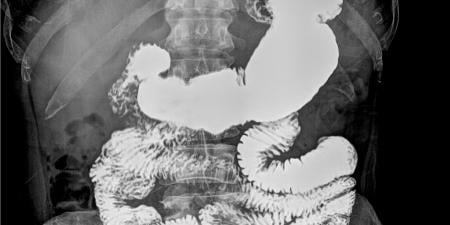Case
Erik was referred to Dr. Slosson's office by his family doctor.
"Hello, Erik, I'm Dr. Slosson. I understand that you've been referred to me because of a recurrent pilonidal cyst that's a little difficult to remove."
"Yep."
"Well, let's take a look."
After confirming the diagnosis, Dr. Slosson informs Erik that there are 2 surgery alternatives at this point. "After removing the cyst and cleaning out the area, we can fold some tissue over the wound and sew it closed. There is a 10 percent chance of recurrence and a shorter healing time. Or we can pack the wound with bandages that will have to be changed 2 or 3 times a day and let the wound close on its own. This only carries a 5 percent chance of recurrence, but has a longer healing time. I'm comfortable with either procedure."
"Well, I say better safe than sorry. Let's do the second procedure. I don't want to go through this discomfort again."
Dr. Slosson nods and tells Erik to schedule the surgery on his way out of the office.
A few days later, Erik arrives at the hospital at 8:00 AM with his wife Vicki. Vicki waits by Erik's bed as they prepare to administer the anesthetic. Dr. Slosson confirms with Erik that he prefers the procedure with longer healing but lower chance of recurrence. Erik agrees and signs a number of consent forms. A nurse's aide escorts Vicki to a waiting room down the hall.
In the OR, Dr. Slosson completes the procedure, and just as he is about to leave the bandaging to a resident he notices an irregularly shaped mole on the small of Erik's back. He knows Erik's wife is just down the hall, and Erik obviously has no problems sharing his medical information with her. Dr. Slosson is only a general surgeon, and he does not have a background in dermatology. He does not know whether Erik has any other risk factors for melanoma, but upon a further examination, Dr. Slosson also notices a dozen or so other moles on Erik's neck and shoulders. Removing the mole would leave only a tiny wound in comparison with the wound from the cyst.
What should Dr. Slosson do?
Commentary
The starting point for our exploration of Dr. Slosson's care of Erik and of any potential ethical issues that could arise in this patient's care begins with our understanding the patient's problem and the goal of his caregiver's treatment. The presenting problem is defined at the first encounter. Dr. Slosson introduces himself and states Erik's problem as a recurrent (italics mine) pilonidal cyst (presumably previously infected and treated) which Erik confirms with a "yep" answer. We're assuming that Erik's referring family physician chose Dr. Slosson because he is a capable general surgeon. To his credit, Dr. Slosson presents his treatment options clearly and succinctly including benefits and risks and without bias, allowing Erik to make a choice, which Erik does. The choice is reconfirmed preoperatively by Dr. Slosson in the presence of Erik's wife, Vicki. We assume that the individual responsible for anesthesia has spoken with Erik before any mind-altering substances have been given. Consents are signed, but what is essential is that communication has taken place. In what appears to be a comfortable flow of events, Erik is taken to the OR and his wife to the waiting area. The pilonidal surgery proceeds smoothly. To this point, every apparent detail has been managed attentively and deliberately and the criteria of ethical conduct, including informed consent, have been met.
The next matter to evaluate is the options the operating surgeon will thoughtfully consider when he notices the mole in the "small of Erik's back" as well as a "dozen or so" additional moles. The limiting factor here is not that Dr. Slosson is "only a general surgeon." General surgeons probably see and excise as many moles (nevi) and skin lesions as do plastic surgeons or dermatologists. The question at hand is what is appropriate in this setting medically and ethically. Can Dr. Slosson biopsy or even excise the skin lesion that most concerns him? Sure he can, but should he without consent? Clearly the answer is "no." First, what about the role of the patient's family practitioner; perhaps he has measured and followed this nevus and the other nevi, for years. Wouldn't a phone call be prudent? Second, Vicki is just down the corridor. Surely, if the surgeon thought that he had no other option, he could break scrub, talk with the patient's wife, obtain her permission to do the excision, have a consent signed and then proceed. All the while, the surgeon may be thinking that he just completed a potentially contaminated operation in local proximity to "the small of the back." Regardless, this is not the optimal time to do an additional unplanned, non-urgent procedure even though it appears to be low-risk. The most careful approach is talking with the referring physician and then following an algorithm of sensible choices, including Erik's input.



